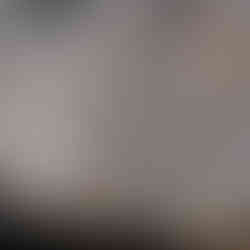89: Bay of the King
- IJ
- Apr 1, 2017
- 3 min read
This is no Aprils Fools joke, these rocks represent an ancient ruler prior to Polynesian arrival. We all know about Raglan and the remarkable series of carved or incised rocks which may be seen on the beach near Whaingaroa Harbour. Practically all of these are subject to the ceaseless pounding of the waves in stormy weather or during high tides. Many of the rocks which have once had intelligible designs upon them, now display only fragments of what the original carver or carvers intended.
In the Dominion Museum was a set of rather faded photographs taken by Augustus Hamilton about the turn of the century. These showed that the designs were deteriorating at a relatively rapid rate. Some twelve stones had been inscribed at one time or another. Some are now quite indecipherable. Four sketches and one photograph (Fig. 2) are here supplied. In these, both S curve and interlocking spirals appear. On other stones the single spiral appears. The human figure in figure 3b illustrates a figure with arms out-stretched and the body in a sitting position. On a number of stones may be seen parts of simple outlines of human faces, tops of heads being drawn after the manner of two inverted semi-circles, a treatment also accorded to the upper lip. In the Journal of the Polynesian Society we have already noted this type of head from Taranaki, where it appears on boundary stones not far from Opunake. The fourth sketch illustrates a carved rock 7 ft. 6 ins. by 6 ft. 6 ins. Apart from spiral designs two outlines of what we take to be manaia appear, as well as a koru. The manaia have somewhat crescent-shaped bodies and tend to be beaked above. The photo by Mr. A. P. Godber is of much interest. As far as we know, it was taken in the 1930's. It was given to the writer soon afterwards. The large stone near the cliff was then well covered with markings, some quite vague. Inverted semi-circles appear on the right, and parts of human heads
Some say it's Ngarunui Beach, it's not. That's the sandy beach to the north and the name means 'great wave'.The actual beach the rocks sit upon is in Manu Bay which means either 'winged creature' such as a bat, or more likely the 'bay of a chief/leader' - in other words someone held in high esteem. (There is a native settlement close by the spot, and some very old natives live there, but they have no knowledge of the existence of the cavern, but said they had a tradition of a very powerful king having his head-quarters at their settlement, viz., Karuni/Karioi.). As this ancient 'king' was supposed to be buried in the cave (a story told by an old Maori woman and in a dated post elsewhere), he was part of the ancient peoples who carved the rocks. So that makes perfect sense.
Now some 2017 photos of three of the 12 boulders that survive
And as fascinating as all this is, these rocks point to a cave nearby holding some ancient history yet to be revealed. It's known about in oral history and some know it's approximation but it is covered over and has been since about 1870 after a group revealed its whereabouts to the local inhabitants. Until then it seems the locals were not aware of its' existence and regarded the petroglyphs as something created by those that were 'here before they arrived'. Many Maori will contest that 'statement' which is fair enough - until proof is supplied by means of finding and entering that cave one day as well.










































































Comments